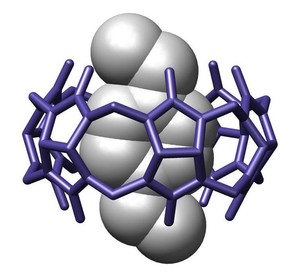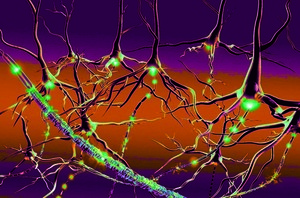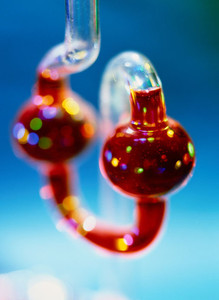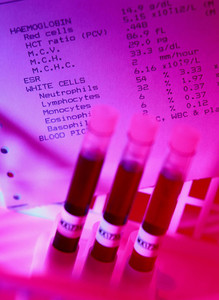Since the first publication on non-biological complex drugs (NBCDs) appeared in 2011 this class of drug products has attracted growing interest and has resulted in the establishment of an Editorial Section on NBCDs in both the GaBI Journal and GaBI Online[1].
These products are more complex than small, low molecular weight drugs. Like biologicals, NBCDs consist of different (closely related) structures that cannot be fully quantitated, characterized or described by (physico)chemical analytical tools. The composition and quality of NBCDs are dependent on the manufacturing process and controls – just as is the case with biologicals.
A working group hosted by the Dutch Top Institute Pharma, now Lygature, in Leiden was set up to raise awareness of the challenges NBCD products present worldwide, to stimulate the publication of scientific reports and discussions and to provide a rigorous, science-based, regulatory policy for NBCD products.
The working group has defined an NBCD as:
‘A medicinal product, not being a biological medicine, where the active substance is not a homo-molecular structure, but consists of different (closely related and often nanoparticulate) structures that can’t be isolated and fully quantitated, characterized and/or described by state-of-the-art (physico)chemical analytical means and where the clinical meaning of the observed differences is not known.’
At present the following NBCD product groups or ‘families’ have been identified and discussed in the literature: liposomes, polymeric micelles, glatiramoids, iron-carbohydrate complexes, albumin anticancer drug nanoparticles and nanocrystals. There are also medicinal products such as low molecular weight heparins (LMWHs) showing similar complexity but falling under different regulatory policies, i.e. by the European Medicines Agency (EMA) LMWHs are seen as biologicals [2] and by the US Food and Drug Administration (FDA) as non-biologicals.
Because of the similarity in product characteristics to biologicals, the NBCD Working Group has proposed on several occasions that regulators should follow the same regulatory pathway for follow-on NBCDs as for biosimilars.
Neither EMA nor FDA has special regulatory pathways for NBCDs. However, both agencies have published draft guidance or reflection papers for liposomes, polymeric micelles and surface coatings, as well as documents on the development of follow-on versions of NBCDs. EMA, for example, has issued guidance on iron-based nano-colloidal follow-on NBCDs [3] and on existing NBCDs, while FDA has issued guidance on follow-on iron complexes, ciclosporin emulsions and liposomes. FDA has also awarded funding to characterize and clinically compare originator NBCDs and follow-on versions after approving these products.
The number of NBCD product families will continue to grow. Outstanding issues for follow-on NBCDs are similar to those for biosimilars and include labelling, comparability and attribute drift, extrapolation, interchangeability, substitution, and last but not least creating a single global approach.
Editor’s comment
This article for GaBI Online is a summary of the full paper published in GaBI Journal.
If you would like to receive a copy of the GaBI Journal paper, please send us an email.
Readers interested to learn more about NBCDs are invited to visit www.gabi-journal.net to view the following manuscript published in GaBI Journal:
The authorization of non-biological complex drugs (NBCDs) follow-on versions: specific regulatory and interchangeability rules ahead?
If you are interested in contributing a research manuscript in a similar area to the GaBI Journal, please send us your submission here.
Related article
Guidelines needed for follow-on versions of NBCDs
References
1. de Vlieger JSB, Mühlebach S. Shah VP, et al. Non-Biological Complex Drugs (NBCDs) and their follow-on versions: time for an editorial section. Generics and Biosimilars Initiative Journal (GaBI Journal). 2015;4(4):167-70. doi:10.5639/gabij.2015.0404.037
2. GaBI Online - Generics and Biosimilars Initiative. Draft revision of biosimilar low molecular weight heparin guideline [www.gabionline.net]. Mol, Belgium: Pro Pharma Communications International; [cited 2016 Jun 3]. Available from: www.gabionline.net/Guidelines/Draft-revision-of-biosimilar-low-molecular-weight-heparin-guideline
3. GaBI Online - Generics and Biosimilars Initiative. EMA issues reflection paper for follow-on versions of iron-based nano-colloidal products [www.gabionline.net]. Mol, Belgium: Pro Pharma Communications International; [cited 2016 Jun 3]. Available from: www.gabionline.net/Non-Biological-Complex-Drugs/Guidelines/EMA-issues-reflection-paper-for-follow-on-versions-of-iron-based-nano-colloidal-products
Permission granted to reproduce for personal and non-commercial use only. All other reproduction, copy or reprinting of all or part of any ‘Content’ found on this website is strictly prohibited without the prior consent of the publisher. Contact the publisher to obtain permission before redistributing.
Copyright – Unless otherwise stated all contents of this website are © 2016 Pro Pharma Communications International. All Rights Reserved.








 0
0











Post your comment